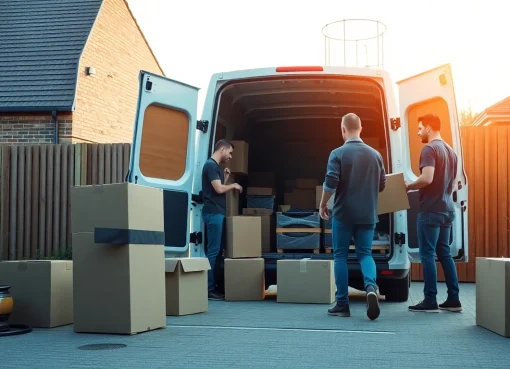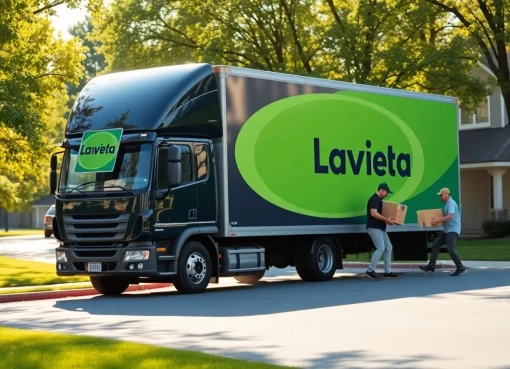Mastering House Moves: Expert Tips and Techniques for a Smooth Transition

Understanding House Moves: The Essentials
When it comes to relocating, house moves can often stir up a whirlwind of emotions—from excitement over a new beginning to the anxiety that comes with packing and logistics. Understanding the intricacies of a house move can help you navigate this complex process with greater ease. In this guide, we’ll explore the foundational elements of house moves, types of relocations, common challenges, and best practices to ensure a successful transition.
What Defines a House Move?
A house move typically refers to the process of relocating personal belongings and household items from one residence to another. But what exactly does this entail? It includes a myriad of tasks such as packing, transportation, loading, unloading, and unpacking items in a new home. The need for a house move could arise for various reasons, including job changes, family expansion, or simply a desire for a new environment.
Types of House Moves Explained
Understanding the various types of house moves can help you identify which category your upcoming relocation falls into:
- Local Moves: Generally refers to moves within a short distance, typically under 100 miles. These moves are usually quicker and less expensive.
- Long-Distance Moves: Involve relocations that exceed 100 miles. These moves typically require more planning and logistics due to the distance involved.
- International Moves: Involve relocating to a different country. This type of move involves customs regulations and international shipping, making it one of the most complex.
- Corporate Relocations: Often handled by employers, these moves can help employees relocate for work purposes, often including benefits that cover moving expenses.
- Specialty Moves: This category includes unique relocations, such as moving an entire estate or transporting valuable items like artwork or antiques.
Common Challenges During House Moves
House moves are invariably challenging. Here are some common obstacles you might encounter:
- Time Constraints: Coordinating schedules between moving services and personal commitments can create a logistical nightmare.
- Packing Disarray: Disorganized packing can lead to lost items or damaged goods. Proper packing strategies are essential.
- Financial Stress: Unexpected costs often arise, from hiring moving professionals to last-minute packing materials.
- Emotional Turbulence: Leaving behind familiar surroundings can stir up a mix of emotions, making the transition even more challenging.
Preparing for Your House Move
Preparation is key to a successful house move. Early planning can significantly lessen the burden during the actual moving process.
Creating a Comprehensive Moving Checklist
A moving checklist acts as a handy guide throughout your relocation journey. It provides clear steps and tasks to ensure nothing is overlooked. Essential items to include are:
- Notify landlords, utilities, and service providers about your move.
- Create a packing timeline with deadlines for each room.
- Gather packing materials like boxes, tape, and bubble wrap.
- Arrange for transportation, whether through a moving company or personal vehicle.
- Schedule a cleaning service for your current home.
Decluttering for a More Efficient Move
Before you start packing, take time to declutter your belongings. This process not only lightens the load but also offers fresh perspectives when you settle into your new space. Here are some effective strategies:
- The Four-Box Method: Label one box for keeping, one for donating, one for selling, and one for trash. This categorization helps clear out unnecessary items easily.
- One Year Rule: If you haven’t used an item in the past year, consider letting it go.
- Sentimental Items: Be ruthless; if it doesn’t add value or joy to your life, it may be time to say goodbye.
Choosing the Right Moving Company
Selecting a reputable moving company can make a world of difference for your house move. Consider the following steps:
- Research: Look for local companies with strong online reviews and positive ratings.
- Get Estimates: Obtain quotes from at least three different companies to ensure competitive pricing.
- Check Credentials: Ensure your moving company is licensed and insured.
- Ask About Services: Some companies offer packing, storage, and unpacking—consider what services will be helpful to you.
Executing Your House Move Successfully
Execution can make or break your house move. Following best practices on moving day can alleviate stress and ensure everything goes smoothly.
Effective Packing Strategies
Efficient packing is an art. Here are some strategies to enhance your packing game:
- Pack One Room at a Time: This approach keeps items organized and makes unpacking easier later on.
- Use Quality Materials: Invest in sturdy boxes and packing tape. Consider padded bags for fragile items.
- Label Everything: Clearly label boxes with their contents and destination room to simplify both loading and unloading.
- Protect Fragile Items: Wrap delicate items in bubble wrap or towels for extra cushioning.
Loading and Unloading Techniques
The actual loading and unloading of the truck can be strenuous if not done correctly. Here are some effective techniques:
- Heavy Items First: Load larger, heavier items into the moving truck first to create a stable base.
- Use Ramps: If available, ramps can make loading and unloading heavier items more manageable.
- Strap Everything Down: Secure items with straps and blankets to prevent shifting during transport.
- Teamwork Matters: Coordinate with your movers or friends to manage the heavier items effectively.
Managing Moving Day Stress
Moving day can be overwhelming, but managing stress is crucial for a smooth transition:
- Stay Organized: Keep your moving checklist close at hand to guide your activities throughout the day.
- Maintain Flexibility: Things may not go as planned; being adaptable can lessen disappointment.
- Take Breaks: Schedule short breaks to hydrate and refresh—especially if working in hot weather.
- Keep Essentials Accessible: Have a bag with essential items (medications, documents, snacks) readily available.
Post-Move Considerations
Even after the move, there are essential tasks to manage to fully transition to your new home.
Settling into Your New Home
Once the moving truck is unloaded, focus on making the new space comfortable:
- Prioritize Rooms: Unpack essential rooms first—such as the kitchen and bedrooms—to establish functionality.
- Personal Touches: Hang photographs and place decorative items to personalize your space.
- Familiarize Yourself: Explore your new neighborhood to identify grocery stores, parks, schools, and restaurants.
Updating Address and Important Documents
Updating your address is crucial from both a personal and legal standpoint:
- Notify USPS: Fill out a change of address form with the United States Postal Service to redirect your mail.
- Contact Banks and Services: Inform financial institutions, utility providers, and any service subscriptions of your new address.
- Update Legal Documents: Don’t forget to change your address on your driver’s license and other identification documents.
Tips for Post-Move Organization
Successful unpacking and organization can transform your new house into a home:
- Unpack Strategically: Avoid temptation by unpacking less frequently used items after essentials.
- Implement Storage Solutions: Invest in organizational tools such as shelving, bins, and hooks to maximize space.
- Regular Decluttering: Develop good habits by decluttering regularly to maintain an organized environment.
Advanced House Moving Techniques
Consider these advanced techniques to further enhance the efficiency of your house move.
Using Technology to Simplify Your Move
Today’s technology offers valuable tools to streamline the moving process:
- Moving Apps: Utilize apps like MoveAdvisor or Sortly to track your inventory and manage tasks seamlessly.
- Virtual Tours: Many moving companies offer virtual tours to assess your moving needs effectively, saving time.
- Online Quotes: Most moving companies provide online estimates, making it easier to compare rates without in-person visits.
Home Staging for a Successful Sale
If you’re selling a current home, staging can significantly impact how quickly and favorably it sells:
- Highlight Key Areas: Focus on staging living rooms and kitchens, as these are often significant decision-making factors for buyers.
- Neutral Palettes: Use neutral, appealing colors to make spaces appear larger and more inviting.
- Remove Personal Items: Take down family photos and memorabilia to help buyers envision themselves in the space.
Sustainable Practices in House Moves
Environmentally conscious moving is a growing trend. Here’s how to incorporate sustainability into your move:
- Eco-Friendly Packing Materials: Use biodegradable packing peanuts or recycled boxes instead of plastic.
- Donation: Donate unwanted items to local charities rather than discarding them in landfills.
- Consolidate Trips: Plan a single trip for your move to reduce fuel consumption involved in multiple trips.
Mastering the art of house moves involves understanding the various components, preparing beforehand, and employing effective strategies during the moving process. By following the guidance outlined above, you can transition to your new home with confidence and ease, ultimately turning a daunting task into a rewarding journey.



Leave a Comment